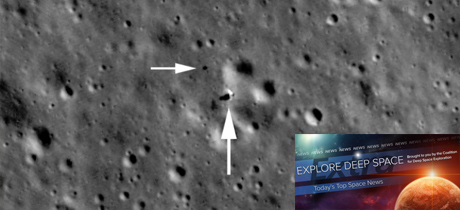In Today’s Deep Space Extra… Researchers address the psychological challenges of future human deep space exploration. With activities shaping up around the globe, 2019 could be one of the most active years for lunar activities in decades. The White House is to announce new Space Force plans Tuesday.
Human Space Exploration
Seeking the future: The fragility of the patron (Op-Ed)
Space Review (2/18): Political science professor Roger Handberg, of the University of Central Florida (UCF), examines the recent rise of such aerospace patrons as Paul Allen, Richard Branson, Elon Musk and Jeff Bezos. Their visions and wealth have enabled them to make strides in ways the government has not been able to in the aftermath of the Apollo Moon landings, according to the op-ed. But what happens to the breakthroughs they make as they age or they are confronted by personal difficulties?
NASA experiments suggest problems lie ahead for astronauts during Mars mission
Globe and Mail of Canada (2/18): Researchers have begun to confront the psychological challenges of human deep space exploration — confined volumes, isolation from family and friends and nature and health risks, with studies involving analogue and remote environments on Earth, such as the Antarctic or Hawaii. One goal is to develop indicators or early signs of difficulties that can be resolved. NASA’s Johnson Space Center (JSC) is also host to HERA, or the Human Exploration Research Analog, an isolated habitat where participants share a spacecraft like environment for periods of up to 45 days. Findings that suggest the early stage of a long journey’s return leg could the most challenging were presented last weekend at a meeting of the American Association for the Advancement of Science in Washington.
Artificial intelligence and a few jokes will help keep future Mars crews sane
GeekWire.com (2/18): Advances in artificial intelligence could play a significant role in assessing the behavior of human explorers assigned to long running missions to deep space destination. The Human Capabilities Assessments for Autonomous Missions is a development effort underway at NASA’s Johnson Space Center (JSC), which is home to the agency’s astronaut corps. The program was a topic of discussion at last weekend’s American Association for the Advancement of Science conference in Washington.
Space Science
The Space Review (2/18): China’s Chang’e 4 lunar lander/rover became the first spacecraft to land on the Moon’s far side in early January, and it appears the event could touch off the most active year in lunar exploration in decades. Israel’s Space IL is hitching a ride aboard a SpaceX Falcon 9 scheduled to launch Thursday night from Cape Canaveral, Florida, with a communications satellite. By gradually increasing its orbit the Israeli spacecraft would be prepared to land on the Moon in April for perhaps the first in a series of missions for potential clients like the European Space Agency (ESA). Meanwhile, India’s Chandryaan-2 is to launch in the spring with an lunar orbiter, lander and rover. Last week, NASA Administrator Jim Bridenstine and other agency officials met with U.S. commercial launch services providers and the news media to voice an urgency for a return to the lunar surface with science and tech payloads selected by NASA, perhaps by year’s end.
Watch a satellite fire a harpoon in space in wild debris-catching test (video)
Space.com (2/18): U.K. companies have joined an effort to demonstrate the removal of low Earth orbit space debris. The demonstration was carried out in orbit on February 8 as a pen sized titanium harpoon was successfully fired at a target and reeled in.
NASA orbiter spots Chinese lander on the Moon
Spaceflightnow.com (2/18): NASA’s Lunar Reconnaissance Orbiter (LRO) has snagged an image of China’s Chang’e 4 lander/rover, which became the first spacecraft to land on the Moon’s far side on January 3. The Yutu rover is resting nearby.
Other News
Trump to sign Space Force SPD-4 tomorrow
Spacepolicyonline.com (2/19): President Trump is expected to sign Space Policy Directive-4 (SPD-4) on Tuesday, establishing a military Space Force as part of the U.S. Air Force, a move first raised by the president last March. Vice President Mike Pence, who chairs the National Space Council, will join the president for the announcement, a move to manage and execute national security initiatives which must be approved by Congress. The House and Senate have differed in the past on how a Space Force should be established.
China wants to build the first power station in space
Bloomberg News (2/18): As part of its drive to become a significant rival in space, China plans to develop a solar power station in space by 2030. In early January, China landed the first spacecraft and rover on the Moon’s far side, and it’s preparing for the assembly of an independent space station, while it establishes an alternative to the U.S. global positioning satellite network.

